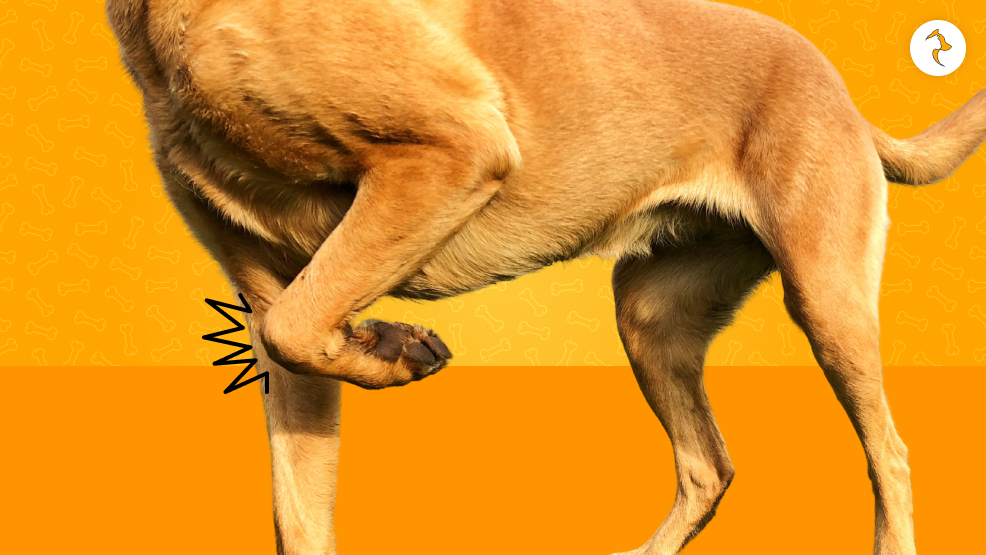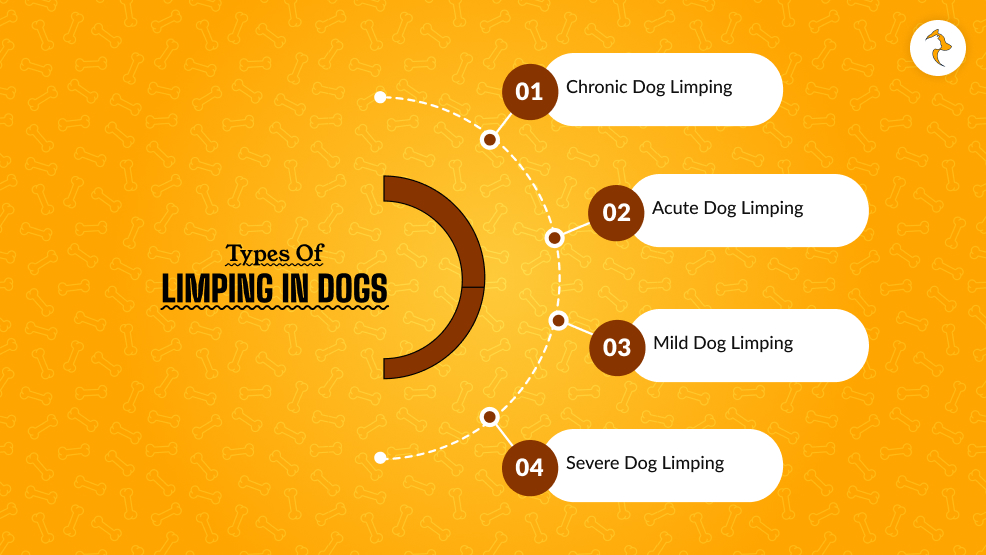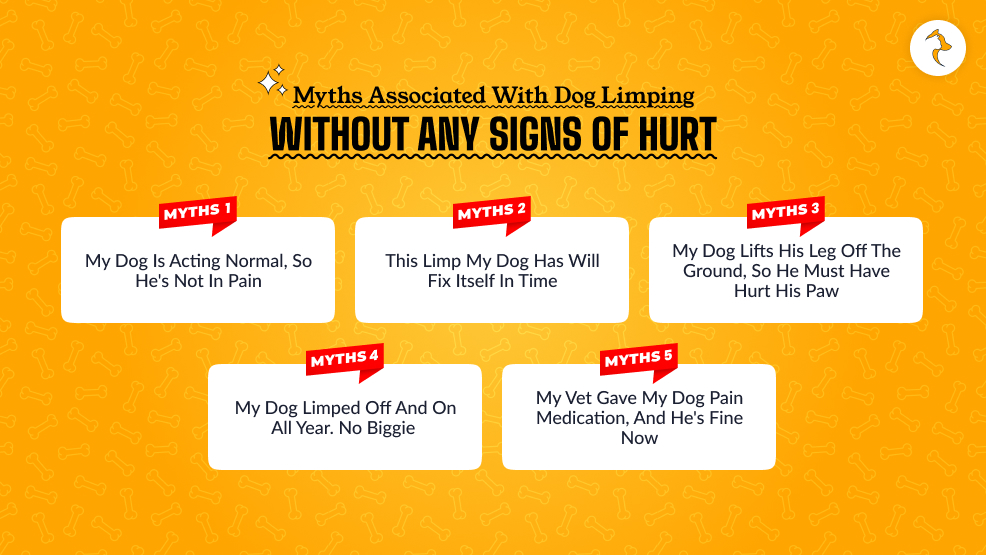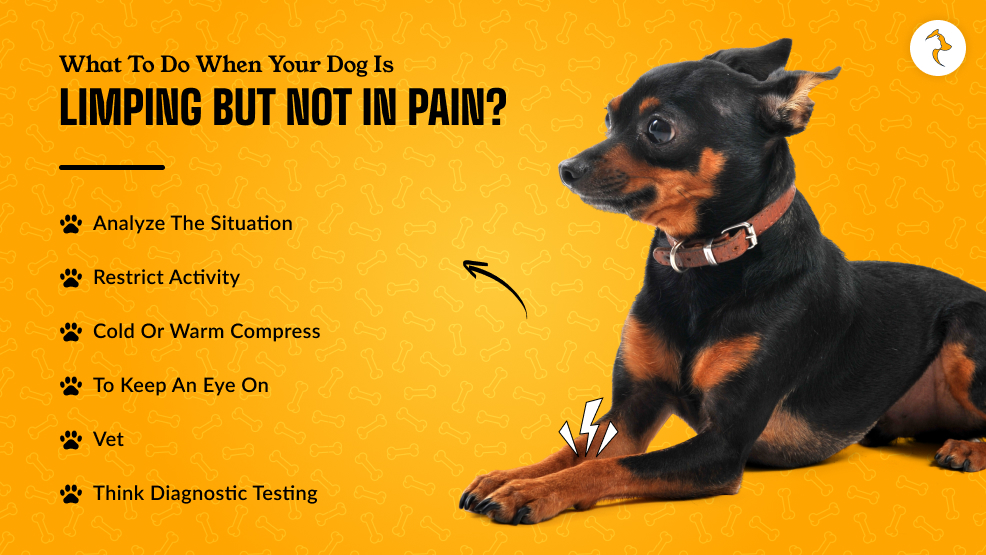My Dog Is Limping but Shows No Sign of Pain: What You Need to Know


“My dog is limping but shows no sign of pain!” If this is something that has been bothering you, then you are not the only one.
Whenever a dog limps, you as a parent are left with a rollercoaster of emotions: outrage, uncertainty, guilt, or apprehension that one now feels.
Limping, or lameness, has several origins, and staying perfectly fine on the outside might just mean that one should look more closely into the whole issue.
The article will cover myths and causes associated with pain-free limping and deal with management strategies for treating them.
My Dog Is Limping but Shows No Sign of Pain?

When it comes to dogs limping there are several reasons as both injuries and conditions can lead to lameness in dogs. So here are a few of the reasons why is my dog limping.
- Injuries to the ligaments or tendons.
- Bone fracture.
- Muscle strains.
- Joint dislocations.
- Wounds.
- Torn nails.
- Insect bites and stings.
- Bacterial or fungal infections of soft tissues, joints or bones.
- Imbedded foreign materials in paw.
- Tick-borne diseases.
- Cancer in the soft tissues, bones, or joints.
- Degenerative joint diseases.
- Autoimmune disorders, like immune-mediated polyarthritis (IMPA)
- Damage or illness affecting the nervous system.
- Developmental disorders, like,
- Patellar Luxation
- Hip Dysplasia
- Elbow Dysplasia
- Osteochondritis dissecans (OCD) on the shoulder joint
Types of Limping in Dogs

While on the topic of why my dog is limping but shows no sign of pain, for first time pet parents, it is to be noted that there are different types of limping in dogs.
Each of these limping has a different meaning associated with them, so let’s get into it.
1. Chronic Dog Limping
A chronic limp is when the limp stays on for more than two weeks. It is possible that the limp was not obvious a few weeks ago but now it’s pretty clear.
Or it is possible that you thought that the limp would go away with rest, but it didn’t.
Although a chronic limp is nothing to be worried about, if it didn’t recover within two weeks then visiting the vet is a good option.
2. Acute Dog Limping
Suppose your dog has just started limping, then this limp is termed acute limping. In this case you need to determine if your dog’s limping is mild or severe.
3. Mild Dog Limping
If you are categorizing your dog’s limp as mild limping, then that means your dog is still using the limping leg but not putting as much pressure on it.
Now if you see that your dog has just started to develop a mild limp then it is better to restrict certain movements for a few days and can also put him in his cage. Then see the improvement for a few days.
But if there is no visible improvement and the limping worsens then it is better that you take him to the vet.
4. Severe Dog Limping
Now if you are categorizing your dog’s limping as severe limping and he is refusing to put pressure on the affected limb or just tap the ground lightly with it. In such a case it is important that you rush him to your vet.
Limping With Other Symptoms in Dogs
To evaluate your dog’s limp and pain, here are a few tell-tell signs that he will show to indicate pain.
- Trembling
- Vocalization (yelping or whining)
- Bleeding
- Behavior changes (like unwillingness to move, hiding, reactivity or fear)
- An obvious fracture or dislocation
- Swelling of the limb
- Limb dragging
- Vomiting
- Disorientation
- Trouble breathing
- Lethargy
Should I Be Worried If My Dog Is Limping but Showing No Signs of Pain?

Yes, lameness is a cause of concern, whether or not your dog is showing any pain. Dogs hide most pain very well, and the absence of whining or licking should not make one assume all is well.
To disregard it may cause further aggravation. The outwardly lame leg may be from muscle strain or joint disease with spondylopathy. Early recognition may help in avoiding any further aggravation.
What Does It Mean If My Dog Limped but Stopped?
If your dog limped, intermittent pain, acute strain, soreness, or muscle fatigue could be responsible. Such occasional bouts might suggest a tendency toward one of the intermittent conditions, ligament injury, or neuropathy.
Various disorders, including Lyme disease or mild joint inflammation, can cause limping, which on occasion becomes prominent. Thus, watching your dog carefully for a repeat of the same may warrant a return to the vet.
Myths Associated with Dog Limping Without Any Signs of Hurt

The above statements revolve around numerous misconceptions concerning dogs limping without visible signs of pain. Let’s disarrange and jumble up some of the widely spread notions:
1. My Dog Is Acting Normal, So He’s Not in Pain
Dogs are natural actors when it comes to pretending, they are in no pain. Playing, eating, and behaving normally doesn’t mean they are not in pain.
They are instinctively inclined to cover up the signs of weakness, so it becomes quite challenging for someone to identify what could be wrong internally.
2. This Limp My Dog Has Will Fix Itself in Time
Some minor limps will resolve without treatment, but many must visit a veterinarian. Ligament tears, joint disease, or infection could worsen with time.
The longer the limp lasts, more than twenty-four hours, the sooner you should seek help from your veterinary clinic.
3. My Dog Lifts His Leg Off the Ground, So He Must Have Hurt His Paw
Although foot injuries are common causes of limping, leg lifting may signal more serious injuries higher up, like hip dysplasia, nerve issues, or muscle injuries. Pain in another body part may also make a dog favor one leg.
4. My Dog Limped Off and On All Year. No Biggie
Chronic limping indicates something is wrong. Long-term or chronic limping as a symptom may also indicate degenerative joint disease, a non-healing injury, or some underlying medical condition that would need to be assessed by a veterinarian.
Intermittent limping can be caused by many conditions, including arthritis, hip dysplasia, and even bone tumors.
5. My Vet Gave My Dog Pain Medication, and He’s Fine Now
The administration of analgesics may relieve symptoms, but they don’t treat the injury or its cause. Continuing to limp despite being on analgesia is a matter of concern, and more testing is necessary. The real cause, not just pain suppression, needs to be ascertained.
Causes of Dog Limping with No Demonstrable Pain

There are many causes for limping with no obvious signs of pain:
- Muscle Strains: Dogs will strain muscles when playing or exercising and will not show immediate signs of pain. Overuse may strain a muscle enough during exercise for the dog to start limping.
- Joint Problems: Injuries caused by arthritis or hip dysplasia may produce limp spasms without signs of distress. The early indications may be very mild or ambiguous, such that they are not readily observable day-to-day but will gradually worsen over months.
- Neurological Disorders: Damage to the spine or nerves may cause a dog to become lame with little or no perception of pain, as in intervertebral disc disease(IVDD).
- Injury to the Paws: Slight injuries, such as shallow cuts, things stuck between the pads, and soft tissue infections, may cause limping in dogs with no signs of pain. Constant paw licking is a clue.
- Tick-Borne Disease: Lyme and anaplasmosis cause limping in episodes, which may wax and wane, like alternating from one leg to another.
- Bone Disorders: Also known as growing pains, bone disorders are etiologically panosteitis, which causes episodic limping in young large-breed dogs.
Signs Indicating Limping Without Clear Pain Persuasion
Gait and behavior observance helps assess a dog’s condition:
- Does limping worsen with activity?
- Is the limp worse in the morning or after resting?
- Does your dog hesitate to jump or climb stairs?
- Do they tend to favor one leg more than others?
- Does the limb or joint show any swelling or heat?
- Are they reluctant to put weight on their legs?
Should any of these signs emerge, make an appointment with your vet. Sometimes, the most subtle changes in locomotion may be fast traffic clues to a hidden riddle.
Pain or Not, The Dog is Limping
An array of reasons could result in a dog limping with no observable sign of pain.
- Dogs Naturally Hide Pain: Weakness is synonymous with being preyed upon in the wild.
- Nerve Damage: Sometimes, limping with no sign of pain, causing due to injury to the nerves.
- With Old Injury Compensation: Limping may arise in a dog as a compensatory mechanism to discharge stress in the case of old injuries.
- Silent Joint Degeneration: Such things could sneak up on them; OA (osteoarthritis) may be one of them. In other cases, stiffness and slight limping may occur before the full-blown pain presentation.
Treatment for Pain-Free Dog Limping

Every treatment given would, of course, depend on what is found. Popular treatments may include offering:
- Rest and limited movement for healing.
- Physical therapy or hydrotherapy in cases of muscle and joint disorders.
- Anti-inflammatories or joint supplements are used to minimize discomfort and get moving.
- Weight restrictions are to relieve the strain on joints.
- In severe cases, such as torn ligaments or hip dysplasia, a surgical option might be necessary to rectify the problem.
- Injection acupuncture or laser therapy will allow for pain relief and rehabilitation of the muscles.
What To Do When Your Dog Is Limping but Not in Pain?

- Analyze the situation: Check for visible injury, swelling, or foreign body in the paw.
- Restrict Activity: Further activity should be restricted to prevent more stress.
- Cold or Warm Compress: Ice packs will limit swelling and warmth for stiffness.
- To Keep an Eye on: Keep a record of when limping seems to create difficulty or appears to recover.
- Vet: If limping persists for more than 24-48 hours, consult the professional.
- Think Diagnostic Testing: X-rays, bloodwork, or joint fluid analysis are good candidates for chronic limping.
The Bottom Line
Ensure why my dog is limping but shows no sign of pain; ignoring it won’t help. It could be such a small thing, but it is as dangerous as a gunshot wound.
Dogs mask their pain, so a limp should never be ignored, even when they appear fine. Observing behavioral changes, limiting her activities, and informing your vet will help keep your dog running and happy.
If limping does not let up, it is best to have a vet examine your dog in depth to find the cause and give treatment.









Leave A Comment